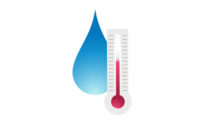By this time, consumers are used to
seeing EnergyStar labels on big appliances such as refrigerators. Now it’s time
to start expecting similar efficiency labels for toilets.
The federal Environmental Protection
Agency actually rolled out its “WaterSense” labeling program a few years back,
saidDerek Bennett, who manages the state environmental
department’s water use and conservation program.
The WaterSense label indicates that
certain toilets - along with faucets - meet certifiable performance and
efficiency standards.
Believe it or not, there are more
than 500 tank toilets and 1,650 faucets on the market now carrying the
WaterSense label, Bennett said, with certified urinals and shower heads
expected to do the same this year.
Still, the drive to save water
through such fixtures hasn’t seemed to catch on, say, like the coiled
energy-efficient light bulbs. “I don’t think we’re there yet,” Bennett said.
And he isn’t entirely sure why, other
than the theory that water generally isn’t like other commodities in regard to
supply and demand. New Hampshire is considered “water rich,” Bennett said; the
Granite State receives an average of 45 inches of precipitation a year.
“People don’t put water conservation
to the forefront,” he said. “But just because that’s true doesn’t mean we
shouldn’t conserve.”
Possibly - and unfortunately - it may
take something major, such as a drought, for more people to buy in to water
conservation through their bathroom purchases. The math, though, is pretty
convincing.
Click
here, to read more on this story from Karen Lovett at nashuatelegraph.com.
Get our new eMagazine delivered to your inbox every month.
Stay in the know on the latest on plumbing, bath & kitchen, industrial PVF, radiant & hydronics, and HVAC products.
SUBSCRIBE TODAY!Copyright ©2024. All Rights Reserved BNP Media.
Design, CMS, Hosting & Web Development :: ePublishing

